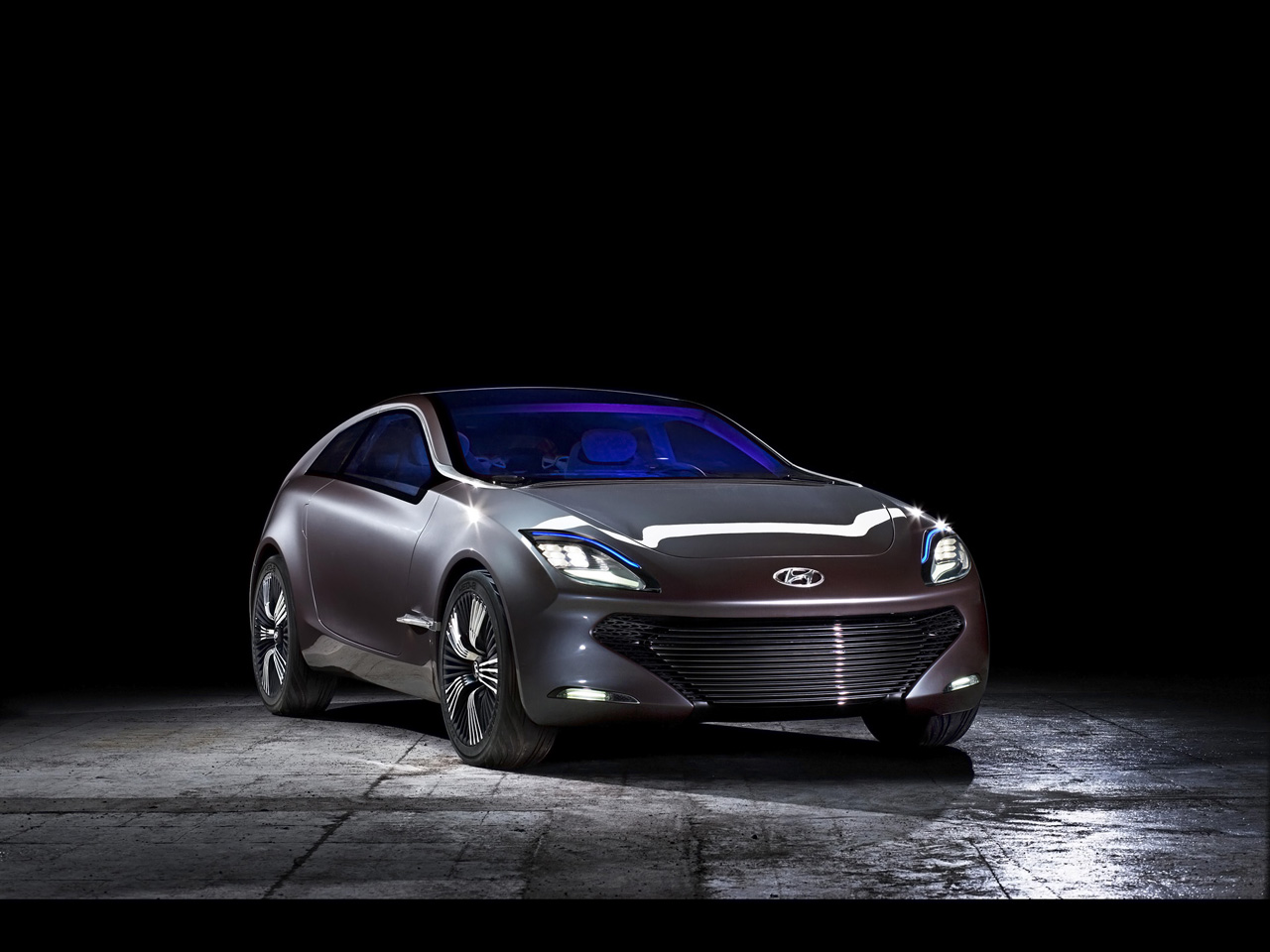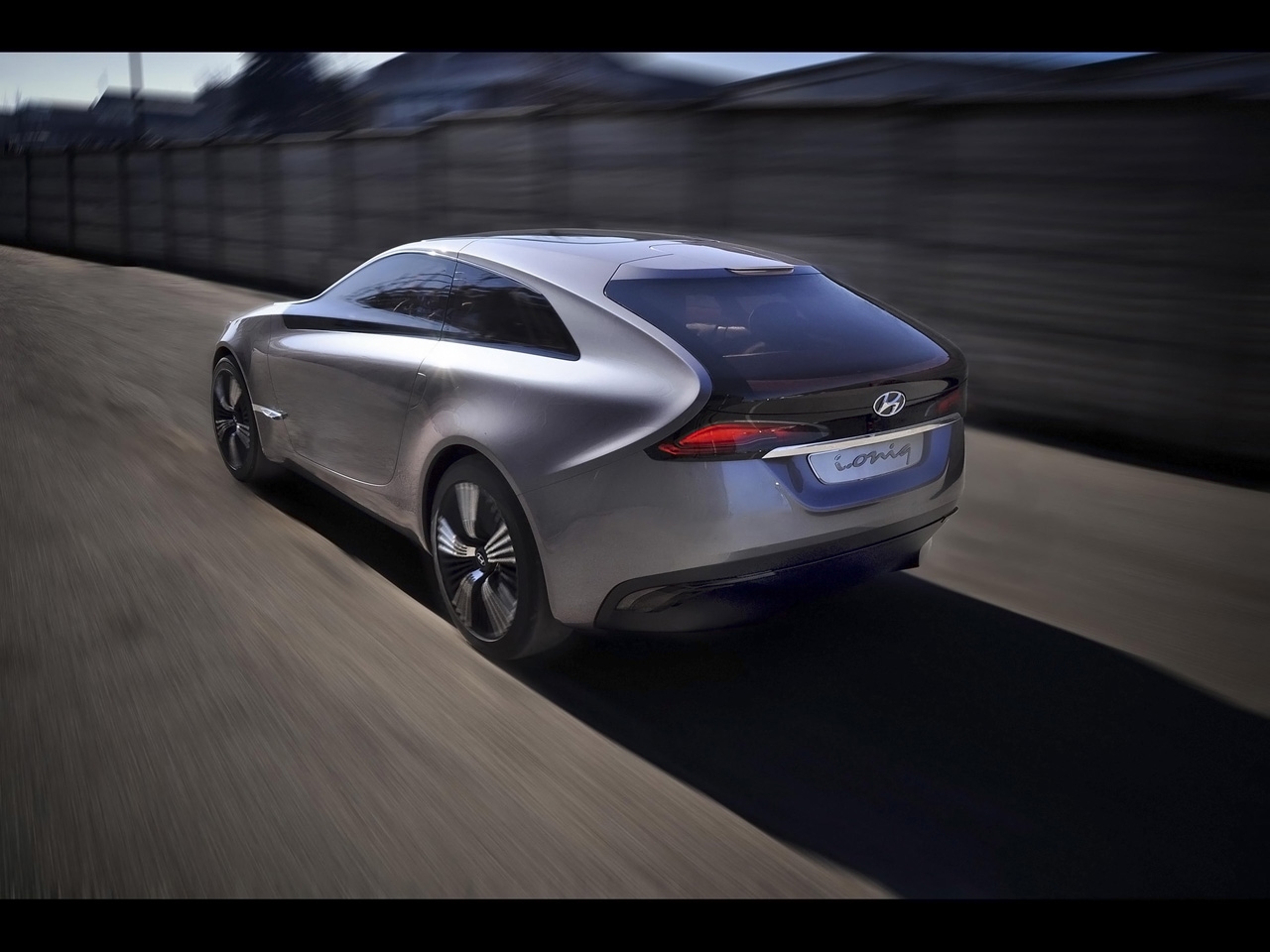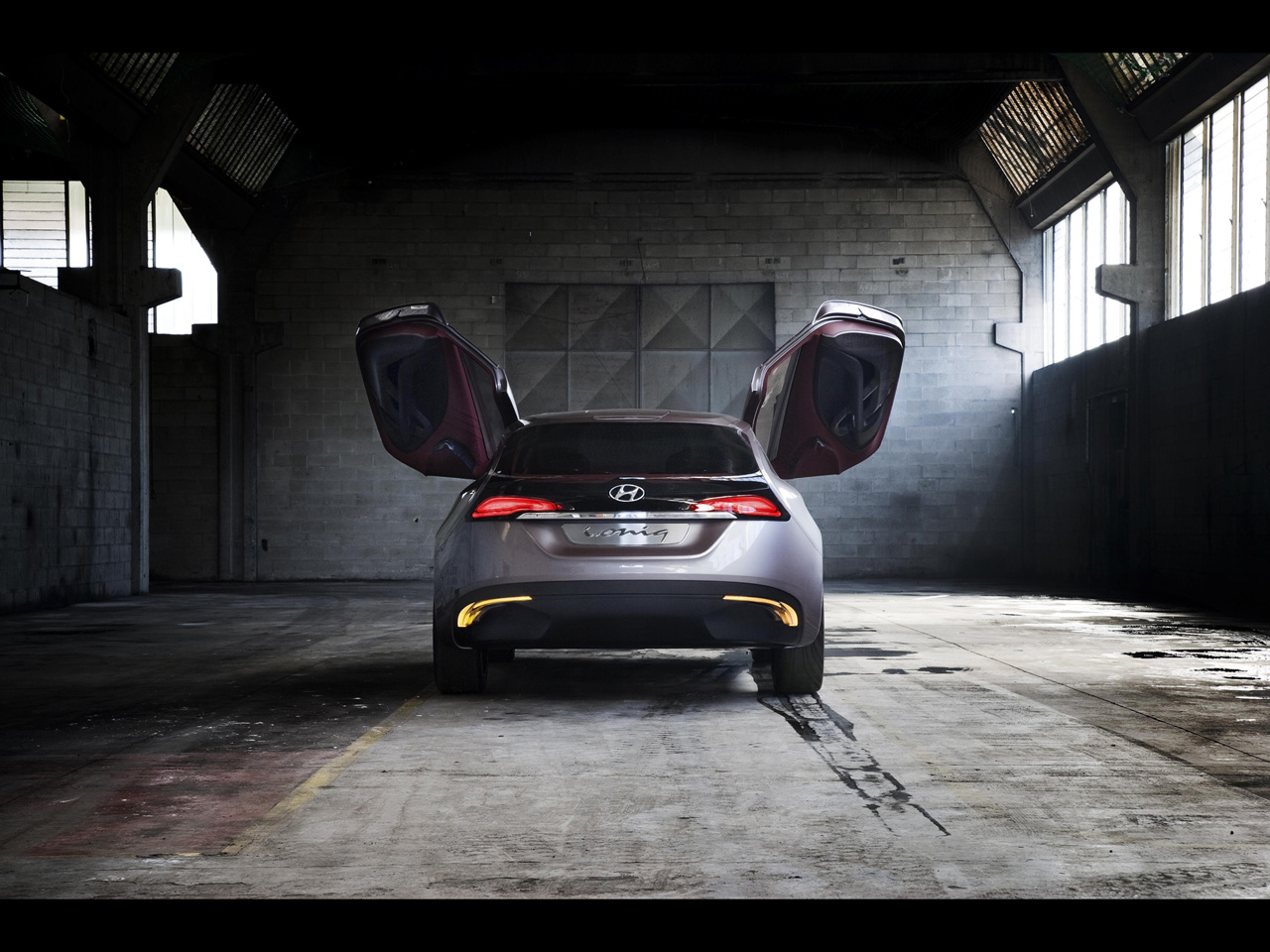2012 Hyundai i-ioniq Concept
|
Price |
-- |
Production |
-- | ||
|
Engine |
1 liter 3-cylinder hybrid |
Weight |
-- | ||
|
Aspiration |
-- |
Torque |
-- | ||
|
HP |
168 hp |
HP/Weight |
-- | ||
|
HP/Liter |
-- |
1/4 mile |
-- | ||
|
0-62 mph |
-- |
Top Speed |
-- |
(from Hyundai Press Release) Hyundai Unveils Unique New Concept Car: i-oniq
Hyundai has unveiled its
latest European concept car, named i-oniq, at the 2012 Geneva Motor
Show, showcasing new technology and design which present an
impression of the company’s future thinking.
The 4,4 meters long i-oniq is an electric sports hatchback with a
range-extending petrol engine. Intended to convey the latest
thinking from Hyundai’s designers and engineers, the i-oniq evolves
the company’s fluidic sculpture form language and represents bold
‘New Possibilities’ with its futuristic powertrain.
Exterior design: inspiration and evolution
The i-oniq concept car,
designed and developed at Hyundai’s European R&D centre in Germany,
is an evolution of the company’s signature design language, fluidic
sculpture.
Hyundai designers chose dynamic proportions to create i-oniq’s
aesthetic and functional body shape. Its design combines gentle
feature lines and muscular surface treatment, conveying premium and
athletic qualities evident in both the exterior and interior of the
car.
Thomas Bürkle, Chief Designer at the Hyundai Motor Europe Technical
Centre, commented, “Two arched curves are the key theme behind
i-oniq, creating a strong and playful contrast between sharp
character lines and soft but muscular features. The profile lines of
the front fender run from front to back, emphasising i-oniq’s coupé
appearance, while offering maximum visibility to occupants.”
Further design elements, such as the ‘penthouse roof’ and LED
headlights, emphasise the advanced technology encased within i-oniq.
The roof is a unique design solution that ensures great space for
rear passengers and contributes to the overall dynamic appearance.
The car’s doors open up to the side: innovative, weight-optimized
door and seat kinematics make entering the car’s front and rear
seats a simple manoeuvre.
The headlights emphasise the advanced technology of i-oniq. A
uniquely-shaped polished aluminium frame houses the day-time running
light and forms a unique signature light element.
Futuristic interior and complete connectivity
Fittingly for a sporty
hatchback, the cabin layout is driver-oriented, with the dashboard
and centre-console geometry based around the driver. The
user-interface components reflect contemporary and future consumer
electronics technology such as movement control mounted on the
steering wheel, floating instrument cluster with multi-layered
projection, and a large background display for navigation,
entertainment and other information.
The rear cabin area has been designed as a ‘cosy lounge area’ to
ensure maximum occupant comfort, creating a positive contrast to the
sports-orientated front area. Use of luxurious interior materials,
as well as futuristic interface components, further expresses the
evolution of fluidic sculpture within the car.
Electric vehicle with extended range powertrain
The i-oniq is powered by
an innovative 1,0-litre, 3-cylinder petrol engine generating a
maximum of 45 kW (61 ps). This unit is mated to an 80 kW (109 ps)
lithium-ion electric motor which is powered by a 55 kW generator,
via a single ratio gearbox.
In electric-only mode, i-oniq can travel 120 km (74 miles) and up to
700 km (435 miles) with the assistance on the petrol engine,
emitting only 45 g/km of CO2emissions. The concept can reach a top
speed of 145 km/h.
About Hyundai Motor Company
Established in 1967, Hyundai Motor Co. has grown into the Hyundai Motor Group, with more than two dozen auto-related subsidiaries and affiliates. Hyundai Motor -- which has six manufacturing bases outside of South Korea including the U.S., China, India, Russia, Turkey and the Czech Republic – sold 4.06 million vehicles globally in 2011. Hyundai Motor, which employs over 80,000 worldwide, offers a full line-up of products including small to large passenger vehicles, SUVs and commercial vehicles.
About Hyundai Motor Europe
In 2011, Hyundai
achieved record sales in Europe of 398.129 units, taking a best-ever
2,9% market share. In May 2011, Hyundai achieved a landmark, passing
5.000.000 sales in Europe since imports began in 1977. The company
designs, engineers and manufactures cars in Europe, specifically for
European customers. This includes the i30, which performed as
Hyundai’s top-selling model in 2011, with 96.000 units sold. Hyundai
sells cars in 28 European countries across 2.500 outlets.
Further information about Hyundai Motor and its products is
available at http://www.hyundai.com/.



